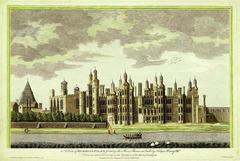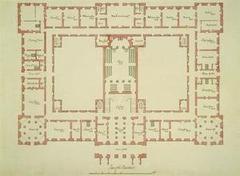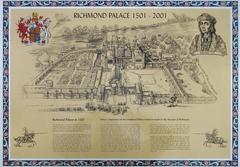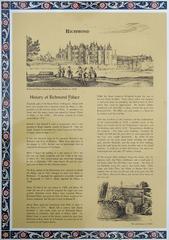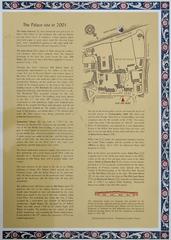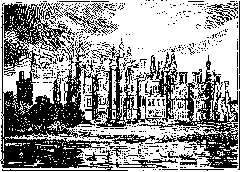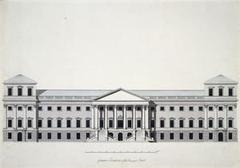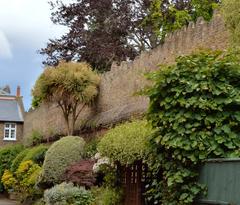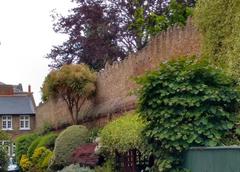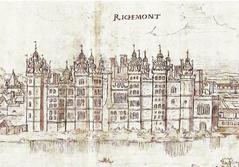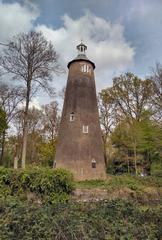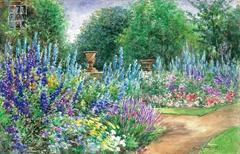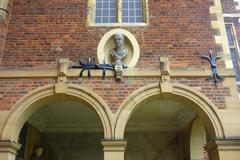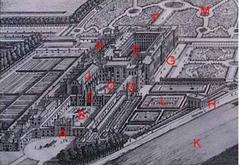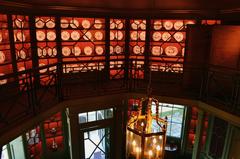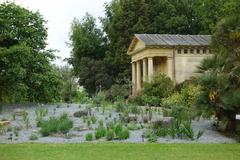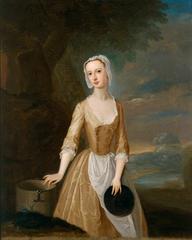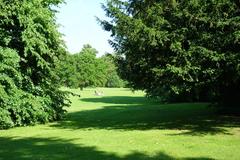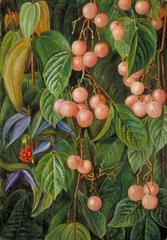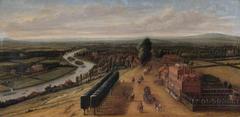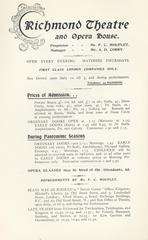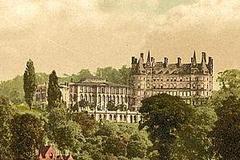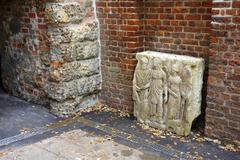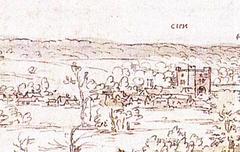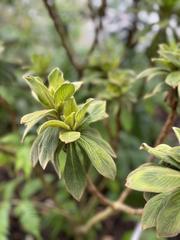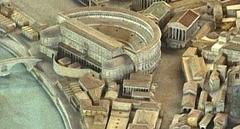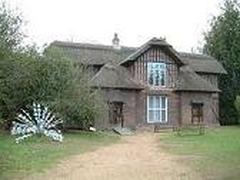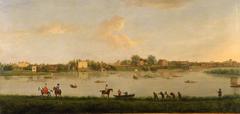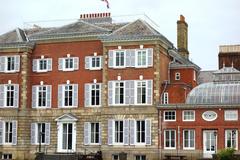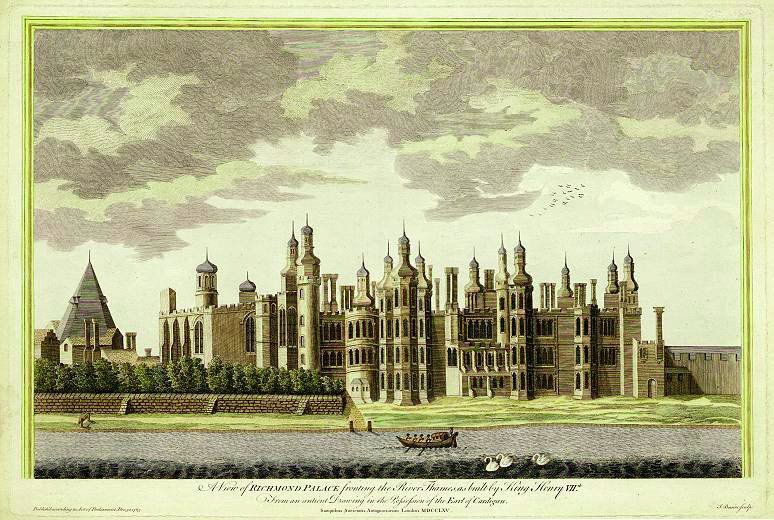
Richmond Palace Visiting Guide: Richmond, United Kingdom – Tickets, Hours, and Tips
Date: 14/06/2025
Introduction: The Enduring Allure of Richmond Palace
Richmond Palace, gracefully positioned on the banks of the River Thames in southwest London, stands as a testament to England’s royal legacy and Tudor architectural brilliance. Built by Henry VII in the early 16th century on the site of the former Manor of Sheen, it became a favored retreat for monarchs such as Henry VIII and Elizabeth I. Though much of the original structure was lost after the English Civil War, surviving fragments—including the iconic Tudor Gatehouse—offer a rare and evocative glimpse into the splendor of Tudor England. This comprehensive guide provides everything you need to plan your visit: history, architectural highlights, practical visitor information, accessibility tips, and suggestions for nearby attractions.
Whether you are a history enthusiast, architecture lover, or a curious traveler, Richmond Palace and its surroundings invite you to step into a world where royal intrigue and innovation once shaped the course of English history (Historic England; Castlepedia).
Contents
- Richmond Palace: History and Significance
- Early Foundations and Tudor Rebuilding
- Architectural Features and Innovations
- Decline, Survival, and Legacy
- Visiting Richmond Palace: Hours, Tickets, and Accessibility
- Guided & Self-Guided Tours
- Travel Tips and Best Times to Visit
- Visitor Facilities and Local Etiquette
- Nearby Attractions and Suggested Itineraries
- Frequently Asked Questions (FAQ)
- Call to Action
- References
Richmond Palace: History and Significance
From Medieval Manor to Tudor Jewel
The story of Richmond Palace begins with the medieval Manor of Sheen, first referenced in the late 13th century as a royal residence under Edward I. It became a central site for royal life and diplomacy, with Edward III dying there in 1377 (Historic England). After a tragic fire in 1497, Henry VII rebuilt the palace and renamed it Richmond, honoring his ancestral earldom in Yorkshire (Royal Borough of Richmond upon Thames). This act marked the emergence of the Tudor dynasty and set a new standard for royal residences.
Richmond Palace quickly became one of the most luxurious and strategically important royal homes. Notably, Elizabeth I spent her final days here, cementing the palace’s place in the annals of English history (Lonely Planet).
Architectural Features and Innovations
Tudor Design and Royal Amenities
Richmond Palace was a pioneering example of Tudor architecture, blending late Gothic and early Renaissance styles. Hallmarks included:
- Red Brick Construction: A symbol of wealth and innovation, brick was increasingly fashionable during the Tudor era.
- The Great Gatehouse: The palace’s most recognizable remnant, completed in 1501, features robust brickwork, battlements, and Henry VII’s arms (Elizabeth I.org).
- Ornate Chimneys and Mullioned Windows: These features provided both decorative elegance and practical comfort.
- Lavish Interiors: The palace boasted tapestries, a library, and a richly decorated chapel—plus one of England’s earliest flushing lavatories, invented by Sir John Harington (Kiddle).
- Gardens and Orchards: Designed for leisure and display, reflecting Renaissance ideals.
The palace layout centered around interconnected courtyards, offering privacy and grandeur. Though most buildings were dismantled after the Civil War, the Gatehouse, Trumpeters’ House, and Wardrobe survive as Grade I listed structures (Historic England; Kiddle).
Decline, Survival, and Legacy
After Elizabeth I’s death in 1603, Richmond Palace’s importance faded. During the English Civil War, Parliament seized and dismantled much of the complex. By the late 17th century, only fragments endured, but these remain powerful reminders of its former glory (British History Online). Today, the palace’s legacy lives on in the architectural details of surviving buildings, street names like Old Palace Yard, and the vibrant community that surrounds Richmond Green.
Visiting Richmond Palace: Hours, Tickets, and Accessibility
Hours and Admission
- Public Access: The Gatehouse and palace remains are part of public spaces and accessible at all times, with no restricted hours.
- Tickets: No admission fee is required to view the exterior remains. Guided tours and special events may incur charges—check the VisitRichmond website for details.
- Visitor Information: The Richmond Station Information Kiosk is open daily (10:00–14:00 winter; 10:00–15:00 summer) for maps, advice, and local tips (VisitRichmond).
Accessibility
- Mobility: The site is generally accessible, though some cobbled and uneven surfaces may present challenges. The area is stroller- and wheelchair-friendly, but caution is advised.
- Facilities: There are no dedicated restrooms or cafés at the palace site, but Richmond Green and the town center offer numerous amenities.
Guided & Self-Guided Tours
While the palace itself is not open for interior visits, self-guided walks are popular and supported by downloadable maps and guides (VisitRichmond). Knowledgeable volunteers staff the information kiosk near Richmond Station. For deeper insight, consider local audio tours or join a scheduled walking tour by Richmond Heritage Guides or similar organizations (Gesso).
Travel Tips and Best Times to Visit
- Getting There: Richmond Station (National Rail, District Line, Overground) is a 7-minute walk from the palace site. Parking is available at Old Deer Park, but spaces are limited (Seeing the Past).
- Best Times: Spring and summer offer lively atmospheres and beautiful gardens. Early mornings and weekdays are quieter, ideal for photography.
- Weather: The site is outdoors—dress for the elements and bring an umbrella if needed.
Visitor Facilities and Local Etiquette
- Food & Drink: Richmond Green is surrounded by traditional pubs, cafés, and restaurants. The nearby town center offers additional dining and shopping.
- Respect the Site: Richmond is a vibrant local community; please be considerate of residents, avoid littering, and keep noise to a minimum.
- Cultural Engagement: Support independent local businesses and visit the Museum of Richmond for exhibitions on the area’s royal connections.
Nearby Attractions and Suggested Itineraries
- Richmond Green: Ideal for relaxation and picnicking.
- Kew Gardens: The world-famous Royal Botanic Gardens, a short bus ride away.
- Richmond Park: A historic royal deer park, perfect for walking or cycling (VisitRichmond).
- River Thames Walk: Scenic riverside paths connect Richmond to Twickenham and beyond.
- Richmond Theatre: For cultural performances in an 1899 architectural gem (Camera Destinations).
Sample Itinerary: Morning at Richmond Palace remains and Green, lunch at a local pub, afternoon at Kew Gardens or Richmond Park, evening performance at Richmond Theatre.
Frequently Asked Questions (FAQ)
Q: What are Richmond Palace’s opening hours?
A: The remains are part of public space and accessible at all times.
Q: Is there an admission fee or tickets required?
A: No, visiting the palace remains is free. Guided tours may require tickets.
Q: Are guided tours available?
A: Yes, self-guided and audio tours are available; occasional scheduled walking tours are offered by local guides.
Q: Is the site accessible for visitors with mobility challenges?
A: Mostly, though there are some uneven surfaces—plan accordingly.
Q: Where can I get maps or visitor information?
A: Download from the VisitRichmond website or visit the Richmond Station Information Kiosk.
Call to Action
Ready to explore Richmond Palace’s rich Tudor heritage? Download the Audiala app for curated audio tours, historical insights, and the latest visitor information. For more detailed planning, event listings, and downloadable guides, visit the official VisitRichmond website. Connect with us on social media for updates and travel inspiration!
References
- Richmond Palace Visiting Hours, Tickets, and History: Your Complete Guide to Exploring this Tudor Treasure, 2025, Royal Borough of Richmond upon Thames (https://www.richmond.gov.uk/services/libraries/branch_libraries/local_studies_collection/richmond_palace_history)
- Richmond Palace Visiting Hours, Tickets, and Historical Insights, 2025, Kiddle (https://kids.kiddle.co/Richmond_Palace)
- Richmond Palace: Visiting Hours, Tickets, History, and Nearby Attractions, 2025, Castlepedia (https://www.castlepedia.org/castles/richmond-palace/24274/about)
- Richmond Palace Visiting Hours, Tickets, and Guide to Richmond Historical Sites, 2025, Seeing the Past (https://www.seeingthepast.com/blog/richmond-palace)
- Historic England Listing for Richmond Palace, 2025 (https://historicengland.org.uk/listing/the-list/list-entry/1002006)
- Elizabeth I and Richmond Palace, 2025, ElizabethI.org (https://www.elizabethi.org/contents/palaces/richmondpalace.html)
- Richmond Palace History and Stories, 2025, Historic Royal Palaces (https://www.hrp.org.uk/richmond-palace/history-and-stories/)
- Visit Richmond Official Tourism Website, 2025 (https://www.visitrichmond.co.uk/see-and-do/richmond-palace-p1536611)
